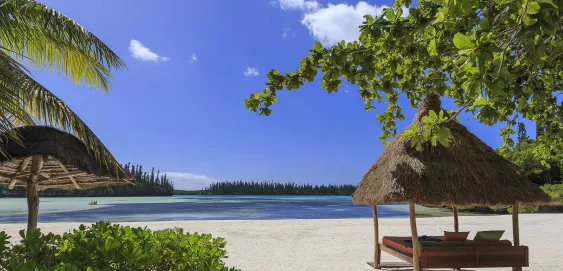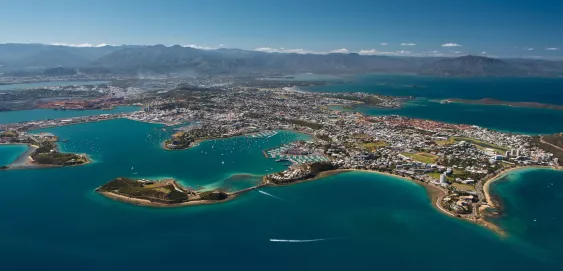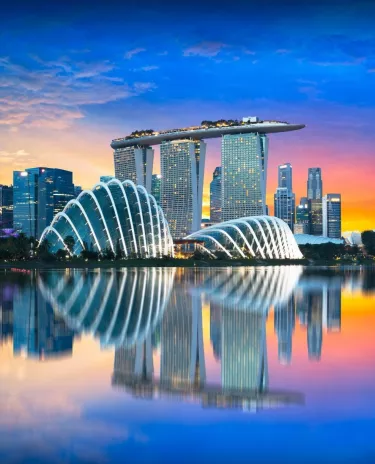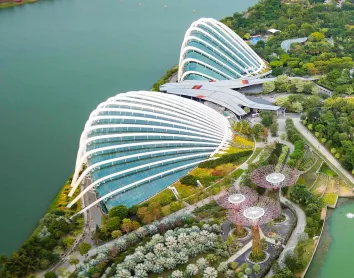
Strolling through Gardens by the Bay
Gardens by the Bay is a vast park spanning over 100 hectares. Located along the edge of Singapore Bay, it was opened in 2012. Here you can discover:
- The Supertree Grove, a collection of 18 metal structures forming trees covered with vegetation (about 160,000 plants).
- The OCBC Skyway, a bridge that connects some of these structures at more than 22 meters above the ground.
- The Flower Dome, a massive greenhouse that houses a wide variety of flowers.
- The Cloud Forest, the second dome at Gardens by the Bay, which replicates a mountainous, humid, and tropical climat
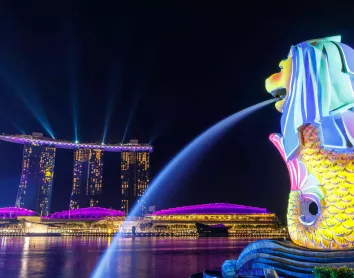
Taking a selfie in front of the Merlion
The Merlion, a statue with the head of a lion and the body of a fish, is one of the city’s emblems. Created by Lim Nang Seng in 1972, it stands 8.6 meters tall and weighs 70 tons. The lion's head represents the lion spotted by Prince Sang Nila Utama when he arrived on the island in 11 BC. The fish body symbolizes Temasek ('sea town' in Javanese), the name the island bore before the prince renamed it Singapura ('Lion City' in Sanskrit).
The Merlion, a true emblem of Singapore across the world, recalls the modest beginnings of one of Asia's dragons, which started as a small fishing village.
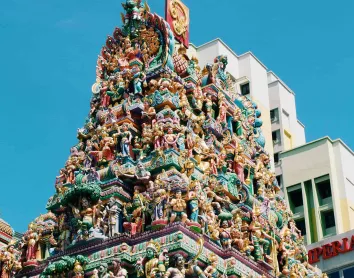
Strolling away from the main avenues
Immerse yourself in a world of colors and scents by strolling through the Geylang Serai district, the cultural center of the Malay community. In the Malay Village, you find yourself transported to another era, that of the Malays during the 1950s-1960s. Here, you can discover Malay crafts such as batik, kite making, or top spinning. The cultural museum displays a multitude of traditional objects and utensils, including weaving looms and musical instruments.
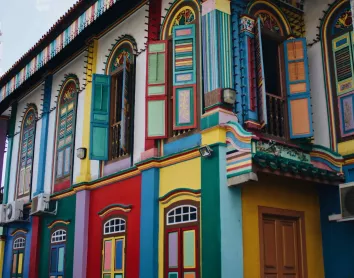
Exploring the Indian quarter
The Indian quarter has existed since the arrival in 1819 of Sir Stamford Raffles, accompanied by Indian assistants and soldiers. Towards the end of the 19th century, other Indian immigrants arrived in search of work. This neighborhood is the heart of Singapore's Indian community. The fragrant streets are filled with small shops selling jewelry, incense, saris, and Indian culinary specialties.
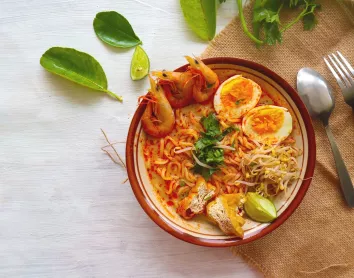
Tasting local specialties
Chinatown was established around 1821 south of the Singapore River following the landing of Chinese settlers from Xiamen, a city in China's Fujian province. Today, this area is known as Telok Ayer. Its Chinese name is Niu Che Sui, meaning "water-carrying ox," because each household at the time had to fetch water from the wells at Han Siang Hill and Spring Street, thus transporting this water using ox-drawn carts. Amid the rickshaws, stroll through the shops and taste the local specialties derived from traditional Chinese cuisine.
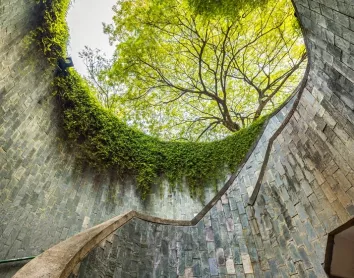
Traveling back in time in the Colonial District
North of Chinatown, across the Singapore River, lies the old quarter. It includes, around the business district, numerous monuments such as the City Hall, the old Supreme Court (a miniature of the dome of St. Paul's Cathedral in London), the new Supreme Court (shaped like a flying saucer, designed by Norman Foster), Victoria Memorial Hall (opera and theater), and the Parliament.
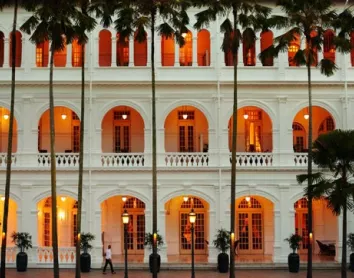
You can also admire churches (St Andrew, Good Shepherd, Convent of the Holy Infant Jesus, Saint Gregory the Illuminator), museums (the Singapore History Museum, the Asian Civilisations Museum, the Fine Arts Museum), Fort Canning (which offers a beautiful view of the city), and especially the legendary Raffles Hotel, dating back to 1887.
The Raffles Hotel is named after the British explorer Sir Thomas Stamford Bingley Raffles, who founded the Singapore trading post of the British East India Company in 1819. The building has hosted artists such as Somerset Maugham, Rudyard Kipling, and Charlie Chaplin. It is undoubtedly the most luxurious hotel in Singapore. Settle in at the hotel bar to sip the famous Singapore Sling cocktail, created within this very hotel.
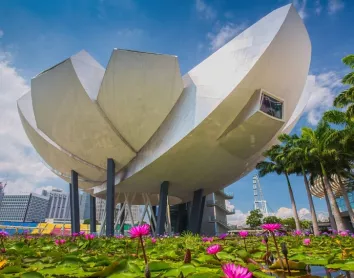
Visiting the ArtScience Museum
Like a lotus flower resting on water, the museum houses three permanent exhibitions: Curiosity, Inspiration, and Expression. These concepts are at the intersection of art, science, culture, and technology.
- Curiosity invites visitors to question the world around them.
- Inspiration focuses on six significant innovative works, both scientific and artistic, that have changed the world, such as Leonardo da Vinci's flying machines, Kongming's flying lanterns, the molecular model of buckminsterfullerene, an ancient Chinese hanging scroll, a high-tech robotic fish, and, of course, an architectural drawing of the ArtScience Museum during its planning and development phases.
- Expression explores various artistic and scientific achievements throughout human history
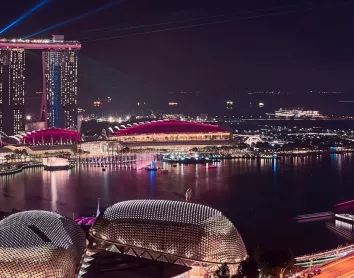
Discovering modern architecture
In the late 1990s, the Singapore government approved a new plan to promote its architecture. After going through neoclassical, art deco, and brutalist phases, the city was slightly influenced by international architectural trends such as postmodernism.
In the 21st century, a new trend began to emerge, thanks to high-tech architecture, which would eventually give the city its own unique identity.
The Sports Hub (stadium) is a fine example of this. The Helix Bridge, connecting Marina Bay to a shopping center, is another. One cannot overlook the Marina Bay Sands, a luxury hotel comprising three buildings and home to the world's longest and highest infinity pool... Nor forget the bay’s theater – the Esplanade (also called the Durian, as it resembles this fruit). Its two massive domes are made up of 7,000 aluminum panels oriented in various directions to ensure lighting.





